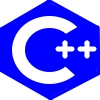History
1966 or 1967 - OOP was invented
"Object-Oriented Programming" (OOP) was coined by Alan Kay in 1966 or 1967.
Early 1970s - the C programming language was created
In the 1970s Dennis Ritchie developed the C programming language at Bell Labs.
- C quickly became popular due to its efficiency, portability, and flexibility.
The reason for the creation of C was to port the UNIX operating system from assembler to a new programming language, enhancing UNIX's portability across various computer architectures.
Early 1970s (too) - OOP gains attraction
Object-oriented programming (OOP) was gaining atraction, mainly through Simula, a language developed in the 1960s.
1979 - Birth of "C with Classes"
Bjarne Stroustrup, a Danish computer scientist at Bell Labs, created and extension for C: "C with Classes".
- This language introduced features like classes, inheritance, and stronger type checking.
- The C language, which is C++ based on, gives the C++ language the ability to be very close to the hardware.
- The OOP part was inspired by the computer simulation language Simula67 and gives the C++ language the ability to describe the problem more easily.
- By 1983, the name was changed to C++, signifying an incremental improvement over C. The ++ is the incremental operator - the name of C++ comes from extended version of the C language
1985 - Birth of C++
In 1985, Stroustrup published The C++ Programming Language, marking the official release of C++.
- That same year, the first commercial implementation of C++ was made available.
1989-1998 - The Standardization Process
During the late 1980s and early 1990s, C++ evolved with new features like function overloading, operator overloading, and templates. In 1989, the first official C++ standard, known as C++ 2.0, was released, adding multiple inheritance and abstract classes.
The Standard Template Library (STL), designed by Alexander Stepanov, became an integral part of C++ in the mid-1990s, introducing generic programming through templates.
The first official ISO standard for C++ was released in 1998 (C++98), providing a stable and portable foundation for the language.
Modernization and Evolution (2003-2011)
A minor revision, C++03, was published in 2003, fixing issues in C++98 but not introducing major new features. However, the language needed a significant update to adapt to modern programming practices.
In 2011, C++11 introduced several powerful features, including:
- Smart pointers (
std::unique_ptr,std::shared_ptr) - Lambda expressions
autotype inference- Move semantics and rvalue references
constexprfor compile-time computation- The new
std::threadfor multithreading
C++11 marked a turning point, making the language more expressive, safe, and efficient.
Continuous Evolution (2014-Present)
C++ continues to evolve with a new standard every three years:
- C++14 (2014): Incremental improvements over C++11, simplifying syntax and improving
constexprfunctions. - C++17 (2017): Introduced features like structured bindings,
std::optional, and parallel algorithms. - C++20 (2020): A major update, adding concepts, coroutines, ranges, and modules for better code organization.
- C++23 (2023): Further refinements, including better compile-time programming, improved standard library support, and better Unicode handling.
The Future of C++
The next iteration, C++26, is expected to bring more improvements, including enhanced concurrency support and better tooling for developers. The language continues to be shaped by the needs of modern software development, balancing performance, safety, and usability.
Conclusion
C++ has come a long way since its inception in 1979. From its humble beginnings as an enhancement to C, it has grown into a versatile and powerful programming language that remains relevant in today's ever-changing technological landscape. As it continues to evolve, C++ remains a cornerstone of high-performance software development.
